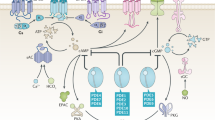Abstract
Editors Note: PDE11, the newest member of the PDE family of phosphodiesterases, has become the center of controversy. Four splice variants were recently identified, PDE11A1–4. Historical data have suggested that PDE11A3 is found in the testis while PDE11A4 is found in the prostate. The controversial issue is the inhibition of PDE11 by tadalafil. In the light of tadalafil's commercial success, its inhibition of PDE11A has been the subject of heated debate. A variety of published reports addressed this issue, suggesting that the target organ of tadalafil's inhibition, the testis, is not adversely affected. Daily tadalafil given to healthy volunteers did not alter semen analysis parameters or blood hormonal parameters, seemingly mitigating the clinical effect of the PDE11 inhibition. However, two recent papers published in this journal have added fuel to this proverbial fire. In this perspective, Sharron Francis, a noted PDE expert, and a co-author of one of the recent papers mentioned above, sheds further light on this contested topic.
Similar content being viewed by others
Author information
Authors and Affiliations
Corresponding author
Rights and permissions
About this article
Cite this article
Francis, S. Phosphodiesterase 11 (PDE11): is it a player in human testicular function?. Int J Impot Res 17, 467–468 (2005). https://doi.org/10.1038/sj.ijir.3901377
Received:
Accepted:
Published:
Issue Date:
DOI: https://doi.org/10.1038/sj.ijir.3901377
- Springer Nature Limited
This article is cited by
-
Can Cyclic Nucleotide Phosphodiesterase Inhibitors Be Drugs for Parkinson’s Disease?
Molecular Neurobiology (2018)
-
Advances in targeting cyclic nucleotide phosphodiesterases
Nature Reviews Drug Discovery (2014)
-
Oral phosphodiesterase-5 inhibitors and sperm functions
International Journal of Impotence Research (2008)
-
A genome-wide scan identifies mutations in the gene encoding phosphodiesterase 11A4 (PDE11A) in individuals with adrenocortical hyperplasia
Nature Genetics (2006)




